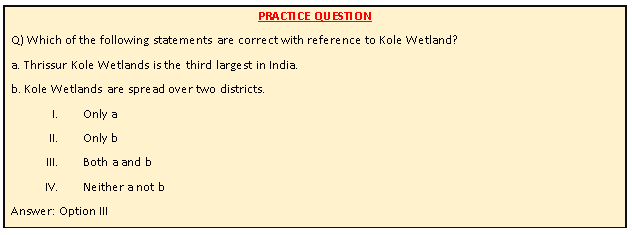Free Courses Sale ends Soon, Get It Now


Free Courses Sale ends Soon, Get It Now



Copyright infringement not intended
Context: Thyreus narendrani, named after the late T.C. Narendran, Professor of Zoology, was collected from a kole wetland ecosystem in Malappuram district and the Christ College campus at Irinjalakuda
Details:
Kole Wetlands:
History:
Geography:
Fauna:
Threat:

© 2024 iasgyan. All right reserved